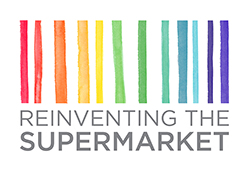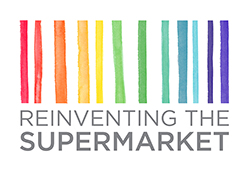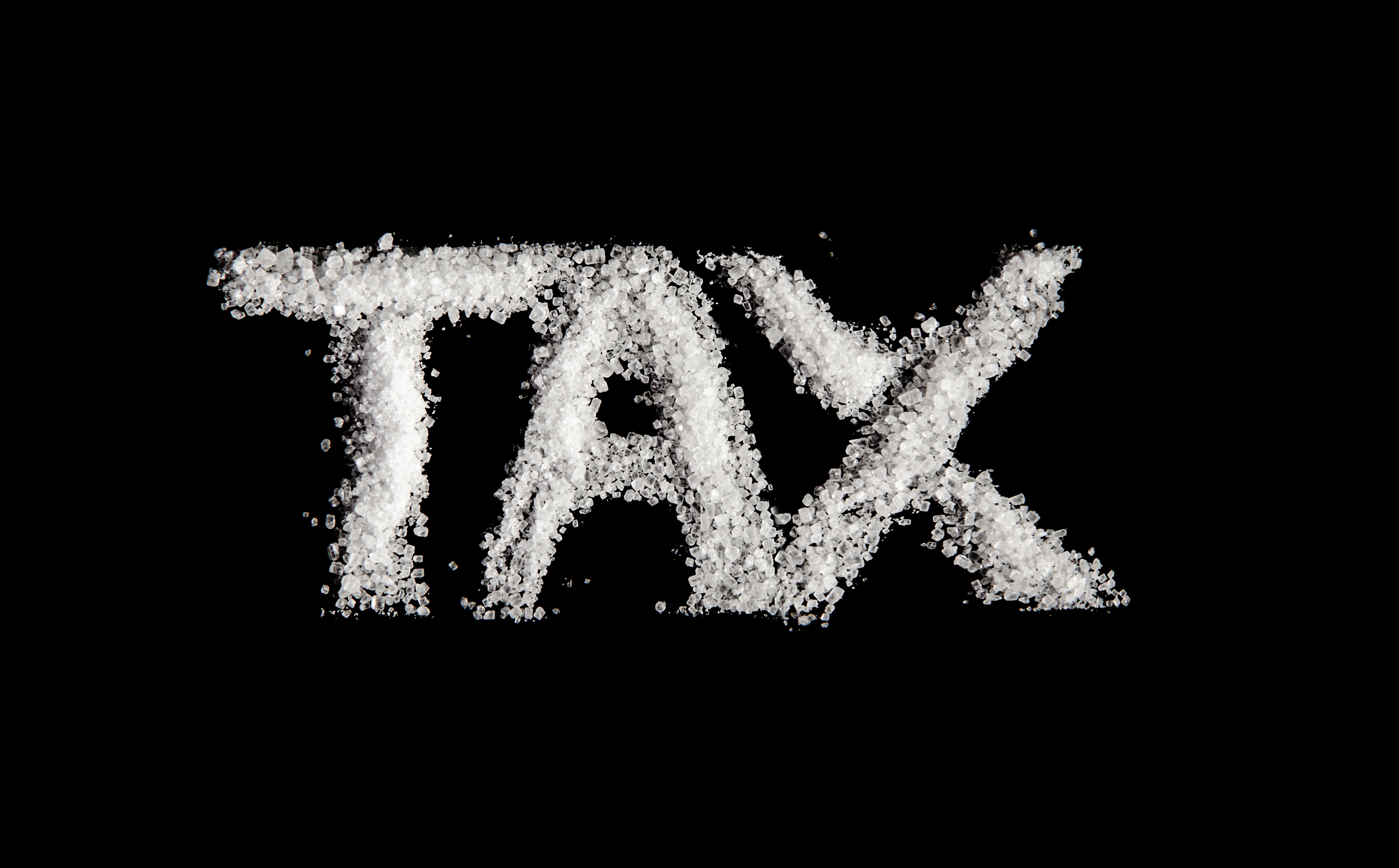A Marketing Analysis
The Big Idea
Imagine a young marketer working for a giant multinational corporation that sells both soft drinks and bottled water. I’m not naming any names here. The young marketer notices that the margins on their bottled water brands are significantly higher than they are on the soft drinks, as much bottled water sells at a premium to soft drink. The young marketer gets a brilliant idea! Since our company brands are present in almost all the chillers in the convenience stores of the region (because the company actually owns those chillers), they could put the price up on their soft drinks and increase the sales of the higher margin bottled water products as a result! Surely the company would be happy to take a hit on soft drink sales in return for a big bump in sales of the higher margin bottled water products?
If that theoretical young marketer had been naive enough to take this plan to their regional VP Marketing, they’d probably be loading their personal belongings out of their desk and into a cardboard box before the end of the day. There are good reasons why soft drink manufacturers have not used this strategy and completely phased out soft drink sales in favour of high margin bottled water. And yet, we appear to have “public health authorities” spouting a very similar-sounding plan with their belief that an increase in the retail price of soft drinks will automatically result in a reduction of sugar consumption in our society as a whole, and even a belief that people will buy more bottled water (assuming that some people think this is a good thing). Their idea of “hard evidence” for this is the case study I will refer to as The Mexican Soda Tax.
Where Are the Marketers in This Conversation?
Over the past few months The Mexican Soda Tax case study has been cropping up more and more. Articles such as this one in The New York Times go to a lot of trouble to ask various people their expert opinion on this marketing problem. In this example they asked the head of a public health programme for the O.E.C.D., experts in nutrition, and cited health researchers. All of this expertise in health and nutrition was contrasted with the self-interested insights offered by the beverage industry spokesman. I find it rather fascinating that since this entire issue is one of marketing, that nowhere, not in a single mainstream article anywhere, have I seen a journalist or blogger ask how this is likely to play out in pure marketing terms. Or in other words… in reality. I guess we marketers really are considered the lowest rung of society.
The Marketing Perspective of the Sugar Tax Debate
Since marketers have been entirely ignored in this 100% marketing-based debate, I’ve decided to put the first foot forward (and if it goes via my mouth, well, it won’t be the first time) in discussing the marketing aspects of this issue. Some of you will immediately question whether I’m correct in calling this debate “marketing-based”, citing that surely this is an issue of public health. As a strategist, I can reassure you that there is certainly a public health objective here. However since the methodology being suggested to achieve that objective is one of changing the relative price points of products on shelves, I can also assure you that the implementation being suggested falls squarely into the remit of the marketing department.
Here is the overarching strategy behind the suggested added sugar tax in the guise of a soft drink tax:
Overarching Objective: Improve public health
Key Project Objective: Reduce public sugar consumption
Key Tactic: Price point plan to increase retail price of soft drink
This is the essence of the plan. The apparent “hard evidence” as cited by The New York Times and many others, is that when a “soda tax” was implemented by Mexico, an average drop in soft drink consumption of 12% occurred over the period of the first year, with an increase in sales of bottled water at 4% over the same period.
So let’s look at the probable details of making a soft drink purchase just a little more closely. I’ll focus on the convenience channel since it’s a major soft drink channel and probably represents the highest price-to-volume ratio in terms of soft drink sales.
Heuristic Processes of Buying a Soft Drink
If you walk into a convenience store on a hot summer’s day, and your intention is to buy something to drink, you will go through a heuristic, or decision-making process. It’s possible that you went through the process very quickly as you climbed out of your car, and knew before you walked into the store that you intended to buy a chilled bottle of Coke because you associate that product with a high sense of refreshment. If that’s the case, and presuming that you are not so poor that the price of a bottle of Coke is a “high-involvement” purchase for you (meaning, that you have to think hard before you spend that money), then at the time you walk through the door of the convenience store your brain will shift into “autopilot”, your eyes will shift focus forward and literally blur out peripheral images, and you will beam in on the Coke branding on the chiller, and without consideration of any other product, or of the price, you will choose the Coke variant you prefer and go and pay for it.
If you are on a very tight budget though, the price of the drink you’re about to buy might become a driver of your choice. You will walk into the convenience store possibly not having made your mind up and your peripheral vision will open up. Now you will pause in front of the chiller, and you will start to take in information that the autopilot purchaser didn’t even see. You will begin to prioritise according to your personal purchase drivers.
Purchase Drivers
We know that if you’re on a diet, or if you’re struggling with obesity, you are statistically more likely to compare the price of the sugar-free diet sodas with the price of bottled water. Perhaps you prefer the refreshing experience of carbonated drinks, so you will exclude the still waters and compare the sparkling waters to the price of the diet sodas, especially if “refreshment” is of high importance to you in that particular moment. Since diet sodas with artificial sweeteners are usually less expensive than sparkling water, if your decision comes down to price, you will probably purchase the soda sweetened with aspartame or Splenda. However, you were not even in the market for a drink with sugar in it in the first place! If your general “health” had been your primary driver, and not price, refreshment or flavour, you may well have chosen a bottle of chilled water.
If you are on a tight budget and you just want something refreshing, you will open your mind and senses to even more information. You might compare the flavoured milks and the juices to the soft drink offer. You will decide very quickly whether water is even something you want to consider.
A lot is going on at a subconscious level here. You may actually be looking for sugar in this purchase, without even knowing it. This is true of the many people, up to 40% of some populations, who are considered pre-diabetic and are somewhere on a continuum of insulin-resistance. That particular shopper is probably blissfully unaware that their desire for a fizzy drink may be being driven by a biological drive for a bit of sugar, and that this is because their blood glucose levels are getting low. Many will not be able to comprehend that their blood sugar is low because they consumed sugar a couple of hours earlier and stimulated an insulin over-response in their bodies. All they know is that they want something sweet. “Sweetness” is one of their primary drivers.
These same sugar-seeking shoppers also subconsciously know that they will not get the “refreshment impact” they desire from a zero calorie, artificially sweetened drink. They probably cannot articulate why that is, but at some level they know their real choice for a sugar hit will be between only those items on the shelf that contain sugar. So they will probably choose between the sugar-sweetened soft drink, a juice, or flavoured milk, and if price is a primary driver, they will simply choose the least expensive of those product categories. One way or the other, they will walk out of the store with something sugary.
For those who have been sweating a lot prior to the purchase, the choice will most often be, both unconsciously and statistically, the soft drink, because it contains not just sugar, but sodium, which is the true critical “refreshment” component in both soft drinks and rehydration drinks promising “electrolytes”, in spite of the fact that in soft drinks it prompts a more rapidly recurring thirst. Most people don’t consciously know any of this, but their body remembers the experience of the burst of sodium-enhanced refreshment from previous occasions and this is reflected in their future purchases. In this scenario, the soft drink with sugar wins on price, and on ingredients, even if neither was consciously considered.
Developing Nation Consumers Respond More Powerfully to Price Increases
The discussion of heuristic processes is based on what the drivers are for the purchase of the product in the first place. The Mexican Soda Tax plan works on the presumption that the major key driver of the soft drink purchase is price. And certainly, in a developing nation where a large proportion of the population is living in dire poverty, such as, say, Mexico, this would be true. A relatively small increase in the price of soft drinks where the majority of purchasers are very poor will have fairly large repercussions in the sales of soft drinks. If that same market also has a badly managed water supply, then it’s likely that the population have been purchasing soft drinks because they are a relatively inexpensive source of safe water compared to buying bottled water, which is what many may have preferred in the first place. Actually, this is not just likely, it’s commonplace in developing nations. Categories such as soft drinks do well in these locations because they are an inexpensive source of both “safe” water and of calories, in an environment where either of those things may otherwise be beyond the scope of the average worker’s income.
Yet the increase in price in Mexico was not relatively small at all. The Mexican Soda Tax was a part of a VAT-type of programme that saw soft drinks incur 16% tax while bottled waters did not. The poorest people probably stopped buying soft drinks with sugar altogether, accounting for the 17% decrease amongst the poorest socio-economic groups. That bottled water sales increased only by 4% (and off what kind of base comparative to soft drinks in the first place, this article does not reveal), means that many who were consuming soft drinks as a source of safe water or calories, could no longer afford to do so, and bottled water was not an option for them because it was always beyond their price range.
The statistical evidence for the real outcome there is probably to be found in the numbers of people experiencing gastrointestinal infections caused by their shift from drinking comparatively safe soft drinks to water from sources that were not as safe. Since the desire for simple and inexpensive calories, mainly in the forms of sugars and starch, are primary drivers of many packaged good sales in developing nations, I’d also want to see how other product categories might have been affected, if we had a case study in which soft drinks alone experienced a price increase, which we do not.
The biological need for calories is great, and calories that would have been missing from the diets of the poorest people in Mexico would be made up by other, likely starchy or sugary, purchases. Sadly, the Mexican government didn’t seem to set this programme up in order to provide controlled marketing data sets that would allow us to have a clear idea of how the poorest people, who are, after all, the primary target of behavioural manipulation through price-setting, re-allocated their limited funds.
What we do know from a marketing perspective is that the wealthiest Mexican socio-economic groups probably did not significantly adjust their purchasing habits of sugar due to, for them, a relatively insignificant price increase of soft drinks and other added-sugar products. The wealthiest socio-economic groups will also have been exposed to a majority of the messaging around sugar consumption. A small percentage obviously shifted their consumption to water. However most did not. The question that remains unanswered is where their specific purchases actually shifted to, because it is in the wealthiest Mexican cohorts that we would see the clearest picture of the likely outcomes of this tactic in a developed nation.
Will Price Alone Convince Poor People to Make Healthier Purchase Choices?
In the markets of developed nations, the purchase of a soft drink is not seen as “high involvement”. Certainly the purchase of some of the more expensive bottled waters, being made for reasons of health and/or status, are higher on the “involvement” continuum, but those who are routinely buying soft drinks are not doing so from the “high involvement” part of their brain. Their purchase is a reflex action and habitual. If they have been through an earlier heuristic process that inspired them to buy zero calorie, artificially sweetened soft drinks in the belief that this was a protective or curative action against obesity, or if they just don’t care what they’re drinking as long it’s sweet and sugary, then they’re buying the products out of habit and out of brand recognition.
Even the poorest people in the developed nations who are already able to afford soft drinks are unlikely to be swayed by a small increase in price. For argument’s sake though, let’s imagine that in a developed nation a huge tax is placed on all drinks with added sugar, large enough to make bottled water look like an alternative on price alone to the poorest portion of the population, who are the only ones to who comparative price point makes a difference. Here’s how it likely plays out for many in that cohort.
To the thirsty “poor” person and habitual soft drink purchaser:
Bottled water: It’s now slightly cheaper than buying a soft drink, but I don’t like the “taste of water”.
Flavoured waters with added sugar: I may as well buy a soft drink, since it’s about the same price.
Flavoured waters with artificial sweeteners: I might give this a try since it’s now (possibly) cheaper than soft drink.
Flavoured milk: It’s gone up in price as well.
Juice: Looks great since it’s now cheaper than almost everything else!
Artificially sweetened soft drink: I’ll consider this now, since it’s considerably cheaper than soft drink with sugar in it.
Neither Major Purchase Shift Will Be Good for Public Health Objectives
Many juice products have as much, or more sugar, than the same volume of sugar-sweetened soft drink. However, since most of the very sweet fruit juices contain no added sugar, they would be exempt from a tax targeting added sugar. A simple tax on added sugar will shift the purchase to juice, for those who are very poor and whose next most powerful purchase driver is that they’re actually looking for sugar, or to diet soft drink variants for those who are very poor and whose next most powerful purchase driver is the desire to drink something carbonated and with a flavour or from a brand they habitually desire.
Those who purchase the juice instead of soft drink with added sugar will likely increase their total daily sugar intake as a direct result of the “sugar tax”. Those who purchase the diet soft drink instead of the variant with added sugar will increase their intake of artificial sweeteners and all the health issues connected to them, including the strong correlation those sweeteners have with increased obesity. It’s one of the best lose-lose plans in terms of health and nutrition I’ve ever seen. The only thing this plan will not cause to be lost is excess weight in the population.
Most Soft Drink Purchasers Will Not Shift to Bottled Water
The purchase of bottled water is highest amongst higher earning socio-economic groups, and potable water is freely available from the nearest tap in a developed nation, which means that very very few people in developed nations are currently buying sugar-sweetened soft drinks as a source of safe water, as they are in developing nations such as Mexico. Very few of the people who currently buy sugar-sweetened soft drinks are unable to afford to buy the bottled water sitting next to it in the gas station chiller, which is the most expensive retail channel from which many people will be purchasing. Even if we bring the sugar-sweetened soft drink up to price parity with the bottled water, or above that, the bottled water will unlikely be the next choice for the average habituated soft drink purchaser. That’s because most people who want bottled water in developed nations can already afford to buy it. If they’re not buying it now, they’re unlikely to buy it when the price of soft drink goes up, even if it goes up by quite a large percentage.
The Tobacco Sin Tax Comparison
We know from the examples of tobacco and alcohol, that the introduction of high sin taxes did not stop people from smoking or from drinking alcohol. This is why you are being shown the apparent miracle results from a developing nation instead of a wondrous chart demonstrating how all the poor people in a developed nation stopped smoking within a year after the historical introduction of tobacco taxes. Because that didn’t happen. Instead, it took a generation of sledgehammer-style society-wide indoctrination of the dangers of smoking and critically, the ability to demonise smokers once the dangers of second hand smoke became apparent. Those who compare sugar with tobacco fail to realise that I will not develop heart disease because you sat next to me in a bus while you drank your bottle of Fanta. So please put your morals back where they belong.
What worked for reducing tobacco consumption was information and education. Starting from kindergarten and all the way through high school, children are taught that smoking is bad and they are even indoctrinated to moralise from an early age on the subject. We should expect that this process will also work with the problem of sugar over-consumption, however it won’t give us all the instant satisfaction that characterises the sugar tax myth. All a sugar tax will provide is yet another windfall for the government and reduce, not improve, the purchase options of the poorest people in society, while not in any way affecting the wealthier amongst us, which is, I suppose, why it’s so popular with the comparatively well off.
Couldn’t We Just Tax the Juices As Well?
Apart from noting that introducing taxes on products that contain naturally occurring sugars, in addition to an added-sugar tax, is the very definition of having set off on the slippery slope of food totalitarianism, we need to consider the vast Pandora’s box of regulatory misery that would be opened by such a move. We would end up with whole articles in The Guardian about whether Fuji apples should be more expensive than Granny Smith’s. And what about starchy vegetables, since starches are sugars too? Should there be a potato tax? What about the naturally occurring sugars in dairy products? You want to make fresh foods exempt? What about dried foods and dried food components such as sultanas or dried apricots that have very high but naturally occurring sugar contents? It all sounds like a nice idea (well, if you ignore the food totalitarianism part), but it’s almost impossible to legislate without massive unanticipated economic complications, and without a regulatory nightmare. Personally, I think it would be much simpler if we invested all that money and physical and emotional energy into educating people about good nutrition.
So…What IS “Good Nutrition”?
And there’s the rub. What the hell is the definition of “good nutrition” anyway? At this point all the so-called experts have been able to generally agree upon is “sugar, bad”. Can you imagine if they’d come up with this silliness when it was all the rage to hate butter and tell people nonsense stories about how it “clogs arteries”? We’d now be going through hell undoing unholy legislative, tax and litigation messes in addition to the public health disaster that has unfolded. Yes, the Danes did try it and it failed.
The fact is that the definition of good nutrition today for any given expert depends upon which decade they were educated in, and whether they’ve kept up with any of the research or debate since then. Most governments still categorise sugary foods as being problematic for their fat content instead of their sugar content, and haven’t even begun to investigate the health crisis being caused by the industrial seed oils they recommend over and above natural fats. At this point neither the government nor the alleged “experts” are in a position to tell the public what to eat and what not to eat. They most certainly should not be imposing punitive measures on the poor when they cannot all even stand in a room together and agree on some of the most fundamental principles of a healthy diet.
Did TOTAL Sugar Consumption Decrease in Mexico?
So, did the total sugar consumption of Mexicans decrease as a result of what was in fact an “added-sugar tax” and VAT-style package, and not just a “soda tax”? I cannot see the evidence for that claim, because no evidence of total sugar consumption is presented. We are told only that soft drink sales went down by 12% and bottled water sales up by 4%. How about juice sales? What about sales of other sources of sugars in the Mexican diet? Total sugar consumption numbers, including consumption of starches, are what are important in this case study, not just the numbers in the one product category that serves the agenda of those presenting the information. To be unable or unwilling to provide complete information means the Mexican case study is not able to stand up to scrutiny. Not only does the Mexican Soda Tax case study, if it was even relevant, not impressively convince that it reduced total sugar consumption, it doesn’t even demonstrate that it didn’t inadvertently increase sugar consumption!
And in terms of wider health, beyond just the sugar issue, can we have some clarity about the soft drink sales numbers in these mainstream articles? Was it total soft drinks, including diet sodas that dropped in sales? Since the tax was on “added sugar” products, then one would imagine that diet soft drink sales probably increased slightly, assuming the brands maintained original pricing on those products. It would be good to know that sort of thing if we’re thinking of basing public policy on this case study, especially since all soft drink consumption, whether of the sugary kind or of the artificial sweetener kind, clearly correlates with poor health. So introducing a tax that only slightly alters the ratios of various health problems, or possibly even increases total health problems amongst the poorest in society, doesn’t seem like a worthwhile strategy to me.
Kicking the Poor is Not a Strategy for Improving the Health of Society
This is not a plea to keep soft drink manufacturers happy. I personally believe the soft drink industry is going to be much smaller in the future, if it survives the shift to wholesome real foods at all. Far in the future our great great great grandchildren might only know the Coca Cola brand as the livery on giant shiny red and white robots stalking the landscape trying to prevent people from drinking potable rainwater without paying a toll, or maybe it will be best known as a brand of organic raw milk. Most likely it will be seen as an emblem of a hopefully extinct era of corporatism in which the poorest people of society were asked to live more poorly while the purveyors of poisons such as processed sugar and high fructose corn syrup were handed generous corporate welfare packages, subsidies, and tax breaks. Heaven forbid that instead of taxing the poor more we simply redeployed corporate welfare money into health and nutrition education.
Why Are Health Professionals Recommending Consumer Spending-Based Tax Policy Anyway?
Health professionals are presumably experts on health, and even that is highly debatable at this point, since they have thus far navigated society to its current state of epidemic metabolic disease. It is simply not appropriate for the medical profession or “public health officials” to be proposing sweeping taxation agendas based on their amateur opinions of how consumer markets might shift as a result of the action.
Even economists, who while being faux-scientists and at least having spent a little time looking at how markets behave never get this kind of thing right. They seem to be generally and prudently staying out of the fray on this one. Yes, the medical opinion is reaching consensus (for the moment) that “sugar” is the enemy (as “fat” was before it), and that is precisely where the contribution of the medical field and public health officials should end. Should it be agreed that we’d like to see all of society consuming less “sugar” (and hopefully this will be the case, although the terminology needs more definition), then other professionals in other specialised areas need to be consulted in the process of implementing that overarching objective.
The only professionals who are experienced at actually influencing, in real life, year in and year out, the purchasing behaviour of human beings under a variety of market conditions, are marketers and those in the professional communications fields. Indeed, marketing professionals primarily work in situations where actual results are required, and data must be shown as evidence of return on marketing investments. Unlike the ivory towered scholars and public servants who have no quarterly sales projections to hit, or doctors who can legally bury their mistakes, marketers must achieve demonstrable results or they’re out. It is about time that those experienced in the marketing of consumer packaged goods be included in this public discourse, especially since the marketing argument for using a sugar tax in an effort to reduce total societal sugar consumption is extremely flimsy. And it’s about time marketers used their powers for the public good.
The Road the Hell…
In answer to the question that is the title of this post, in my experience, the marketing reality of a Mexican-style added sugar tax in a developed nation market is that regardless of the intentions behind the move, not only is it highly unlikely to provably decrease total sugar consumption; it will quite possibly have the unintended consequence of increasing sugar consumption for many of the very people who will suffer most as a result, on both the financial and health levels. It is just not a useful model for decreasing the over-consumption of sugar in a developed nation.
Instead of treating the poorest in our society as if they’re a bunch of idiots who need their wrists slapped for trying to take a cookie out of the jar, we need to start earnestly educating people as to the truth of all dangerous ingredients, of unnatural and synthetic processed foods, and ensuring that the ability to eat a healthy diet is realistically within the reach of all of us. On that front, frankly, sugar is only one of the problems we face.





Leave A Comment